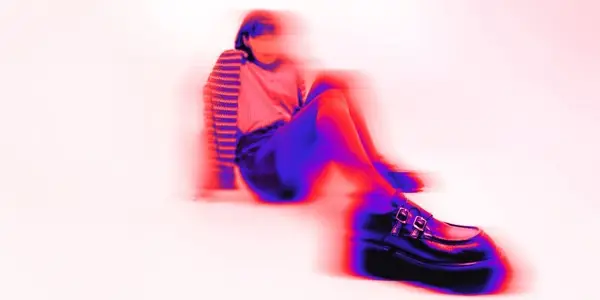Popular

Second Life is a universe brimming with creativity, allowing for stunning virtual photography and artistic expression. However, sharing these unique visuals on mainstream social media platforms can sometimes be a minefield. Automated content moderation systems, primarily trained on real-world imagery, can misinterpret SL’s stylized avatars, dynamic poses, and artistic camera angles, leading to images being blurred, flagged as “adult,” or even account warnings.
This guide aims to provide Second Life creators with practical strategies to showcase their virtual artistry while minimizing the risk of running afoul of often opaque content policies. It’s about understanding perception and presenting your work thoughtfully.
Disclaimer: There are no foolproof methods, as AI moderation is imperfect and platform policies can be inconsistently applied. However, these tips can significantly reduce your risk.
Why Second Life Images Can Be Misinterpreted
- Automated Systems Lack Context: AI moderators analyze pixels for patterns associated with nudity, suggestive content, or violence based on real-world data. They often lack the nuanced understanding of a virtual world’s context, fantasy elements, or artistic intent.
- Avatar Anatomy & Attire: SL avatars, while virtual, can have realistic or hyper-stylized human forms. Certain clothing (or lack thereof, even if non-human skin textures are used) or even form-fitting outfits can trigger flags if they resemble real-world nudity or overly suggestive attire.
- Posing and Angles – The “Confusing” Factor: This is where SL’s flexibility becomes a challenge.
- Poses: A dynamic dance pose, an athletic leap, or even an avatar sitting in a particular way can be misinterpreted by an AI if a limb’s position or the overall silhouette accidentally mimics a suggestive real-world pose.
- Camera Angles: A low angle shot, a close-up on a particular body part (even if innocuous in SL), or a perspective that foreshortens limbs can create visual ambiguity that AI might flag.
- “Uncanny Valley” & Stylization: Sometimes, the very artfulness of SL avatars (not quite photo-real, but not cartoony) can confuse systems.
Strategies for Safer Sharing of Your SL Art
The goal isn’t to stifle your creativity but to be more mindful of how your images might be perceived by an automated system looking for specific patterns.
-
Wardrobe & Styling – Coverage and Context:
- Consider the Platform: What’s acceptable in an SL-focused group might not be on a general Instagram or Facebook feed.
- Strategic Coverage: Even if an avatar is wearing “full body” fantasy skin, if it resembles nudity too closely (e.g., lacking clear clothing indicators like seams, collars, belts, even if it’s alien skin), it can be flagged. Consider adding accessories, partial clothing layers, or ensuring distinct “clothing” textures are visible.
- Avoid Overly Sexualized Outfits (for mainstream): While prevalent in SL, highly revealing or fetish-style attire is almost guaranteed to be flagged on most general platforms. Save these for SL-specific platforms or appropriately gated communities.
- Contextual Attire: A swimsuit at a virtual beach is more understandable than the same attire in a non-contextual setting.
-
Posing & Composition – Directing the Eye:
- Mindful Posing: Review poses before capturing. Do they inadvertently emphasize or create outlines that could be seen as sexually suggestive from a purely pattern-recognition standpoint? Sometimes a slight adjustment to a hand, leg, or torso can make a difference.
- Strategic Camera Angles:
- Avoid angles that excessively focus on crotch areas, buttocks, or chests, especially with tight clothing or dynamic poses.
- Be cautious with extreme close-ups on body parts unless the artistic intent is very clear and non-suggestive (e.g., focusing on a detailed piece of jewelry on a hand).
- Consider if a slightly higher or more level camera angle would reduce ambiguity.
- Cropping for Clarity: Crop your final image to guide the viewer’s eye and remove potentially distracting or ambiguous elements at the edges of the frame. Ensure the focal point is clear and non-controversial.
- Depth of Field: Use depth of field (blurring the background) to draw attention to the main, “safe” subject of your photo, making potentially ambiguous background elements less distinct to an AI.
-
Lighting & Atmosphere – Clarity is Key:
- Avoid Excessive Obscurity: While artistic, very dark or shadowy images where forms are indistinct can sometimes be flagged if the AI can’t clearly determine what it’s looking at (and errs on the side of caution).
- Ensure Key Features are Recognizable: Good lighting can help define that an avatar is wearing textured clothing rather than just being a “skin.”
-
Emphasize the “Art” and “Virtual” Aspect:
- Watermarks/Signatures: Consider a small, unobtrusive watermark stating “Virtual Photography,” “Second Life Art,” or your artist name. This can subtly signal to human reviewers (if it gets to that stage) the nature of the content.
- Artistic Filters (Used Wisely): Applying subtle artistic filters can sometimes shift the image further from “pseudo-realism” and more into the “digital art” category, which might be treated differently. Avoid filters that further obscure or make the image look low quality.
- Framing/Borders: Presenting your image with a digital frame or border can also enhance the “artwork” feel.
-
The Power of Context – Captions and Descriptions:
- Explain Your Work: Use captions to describe the scene, the character’s story, or your artistic intent. “A warrior queen surveys her domain” provides context that “avatar standing” doesn’t.
- Relevant Hashtags: Use hashtags like #SecondLifeArt, #VirtualPhotography, #DigitalArt, #SLFashion alongside more descriptive tags. Avoid hashtags known to attract adult content.
- This won’t stop an AI flag, but it’s crucial if your content goes to human review.
-
Know Your Platform’s Rules (Generally):
- While often vague, quickly review the Community Guidelines of the platform you’re posting on, especially sections related to Nudity and Sexual Solicitation.
- Understand that different platforms have different tolerance levels.
-
Test and Learn (Cautiously):
- If you’re unsure about an image, perhaps post it to a more private setting first (if the platform allows) or observe how similar SL artists fare.
- Pay attention to which of your images, if any, get flagged, and try to identify common denominators.
What If Your Image Gets Flagged or Blurred?
- Don’t Panic: It’s often an automated decision.
- Review the Reason (if provided): Understand why the platform thinks it violated a policy.
- Appeal if Appropriate: Most platforms have an appeals process. If you genuinely believe your SL art doesn’t violate their terms (especially after considering their rules from a real-world perspective), file an appeal. Provide a brief, polite explanation of the image’s context as virtual art.
- Adjust Future Posts: Learn from the experience to refine your approach.
Sharing the incredible artistry of Second Life on broader platforms requires a thoughtful approach. By being mindful of how automated systems might perceive your work and by strategically composing and contextualizing your images, you can continue to share your vision with a wider audience while reducing unwelcome interventions.

